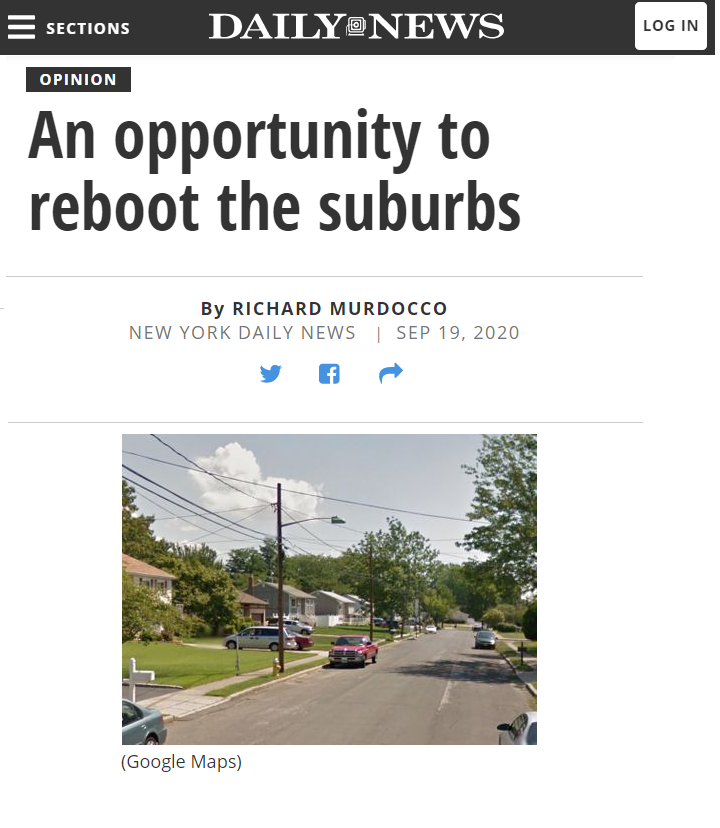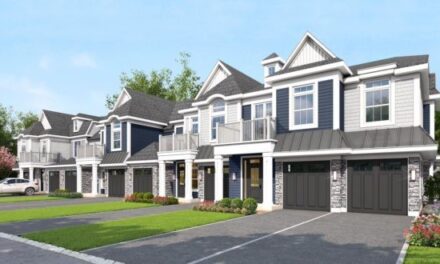The following was originally published in the New York Daily News on September 19th, 2020. You can read the original here.
By Richard Murdocco
As growing numbers of buyers who no longer have to commute snap up available homes in communities outside central cities during the ongoing coronavirus pandemic, we as a region can seize this moment by redefining what it means to be suburban.
By harnessing the newfound momentum borne out of a crisis, and as President Trump insists that suburbs hold the line against the addition of affordable housing, now is the time to move decisively in the opposite direction and work toward the longstanding goals of creating a better region — one that is more prosperous, vibrant and sustainable.
From Westchester to Long Island to the New Jersey and Connecticut suburbs, let us finally work together to create needed mixed-use housing in areas where the proper infrastructure is in place to support such growth. And if that infrastructure doesn’t exist, we can help inject life into our economies by putting people to work by creating it. As we move towards a stronger region, our efforts will showcase the value of having ample green space and protected lands that ensure our drinking water is pristine for the next generation.
Since our last suburban boom after World War II, local municipalities have hemmed and hawed about how to best finance their own ever-growing ambitions. Local governance ballooned, but the funds to power it did not.
The result has been unwieldy and unsustainable, with the main tool used by policymakers being an ever-cascading flurry of tax breaks as an enticement for local companies to stay. With municipal coffers running on empty, we must now focus on developmental policies that both create and innovate, not merely pay to keep what we already have, a practice our local industrial development agencies have been doing for years.
In fact, the unsustainable tax giveaways in New York’s burbs have gotten so out of hand that a 2019 probe by state Sen. James Skoufis (D-Rockland) found that tax breaks offered by state-approved local Industrial Development Agencies often “fall significantly short of their benefit promises, distressing the economic welfare of local communities.”
Instead, suburban policymakers must work with private industry and community stakeholders in crafting a firm roadmap for future investment that spans political jurisdictions and boundaries. This plan must allow for tangible economic and environmental benchmarks to be both established and met, including job creation minimums, the setting of open space acquisition goals, and built-in accountability with fiscal claw-backs of any received benefits as necessary.
This isn’t saying the road ahead will be easy. Counties, by design, are limited in their ability to enact substantive land use policy that sticks; to be successful, they must leverage their political clout and localized know-how with the ambitions of greater New York State, whose executive in recent years sees himself as much as a builder than a politician. If the political tides shift in Washington this November, perhaps the federal government can once again become a willing partner as well.
In addition, this boom may very well be short-lived, as postal service change-of-address requests don’t necessarily mean that people are ditching their old place permanently.
Troublingly, I’ve seen pushback against this great influx of new residents who come from New York City and beyond. Staying true to the suburb’s roots of exclusion, various groups have taken to claiming that these supposed outsiders will change their communities for the worse — attracting more traffic, somehow raising taxes, and supposedly irreversibly changing neighborhoods’ “character,” a veiled statement with insidious undertones.
Instead, this rush of people should not be shunned but openly welcomed. Our models of growth, which have become twisted in unsustainable costs and insider deal-making, no longer work. We need new life, energy and ideas to make New York’s suburbs shine brighter.
Remember, it wasn’t too long ago that homes sat foreclosed and vacant as the pundits and supposed experts snidely debated not if the suburbs were dying, but when they’d finally be buried for good. Now, as long lines meander around the block for open house events, two things are clear: They were wrong, and we need more housing as soon as possible.
While it’s easy for some to now blithely write off New York City, history shows us every area rises and falls with the times. The five boroughs will bounce back from their recent troubles as they have from terrorism, bankruptcy and more.
New York’s suburbs are where the American dream was allowed to be enshrined for some. Now can we seize our moment and ensure they do once again for all?
Murdocco, who writes on Long Island land-use and regional policy issues at TheFoggiestIdea.org, is an adjunct professor of economic development and planning at Stony Brook University.














